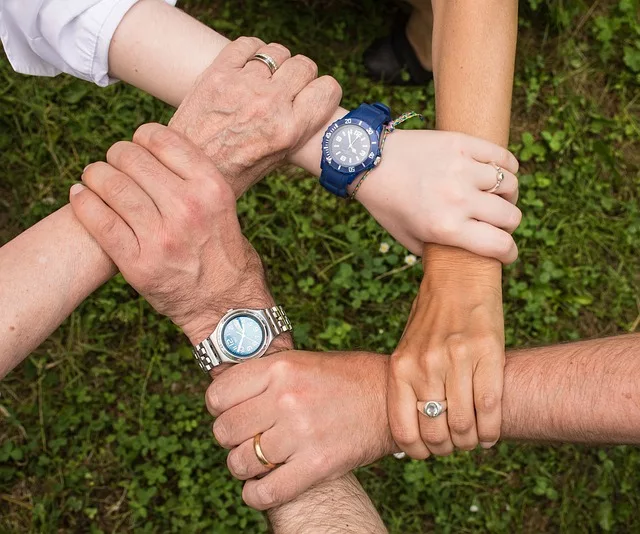The Great American Smokeout is recognized every year on the 3rd Thursday in November.
It’s almost unbelievable to think that big tobacco companies used to advertise cigarettes in national television commercials as recently as the 1950s. These ads promoted a culture of smoking that addicted generations of Americans.
In fact, it wasn’t until 1970 that the Public Health Cigarette Smoking Act banned companies from advertising cigarettes on television.

Just a few years later, in 1977, the American Cancer Society (ACS) held it’s first annual Great American Smokeout event in San Francisco, a yearly intervention that’s endured for 41 years.
The Great American Smokeout is a starting point for millions of people who want to quit smoking, but don’t know how or have tried multiple times and failed. The ACS provides tools and resources to help individuals create a plan that encourages success.
The Great American Smokeout Helps, But…
Thanks to research and education, the number of people who smoke cigarettes has been in decline for decades. However, a staggering number of Americans still struggle with a serious dependency to nicotine. It’s an extremely addictive substance.
According to the Centers for Disease Control Prevention (CDC), an estimated 40 million adults in the U.S. still smoke cigarettes, along with 4.7 million middle and high school students.
Tobacco abuse remains the leading cause of preventable disease, disability, and death in this country.
E-cigarettes (vaping) or smokeless alternatives, such as chewing tobacco, are also just as addictive and harmful as cigarettes. Unfortunately, a new, younger generation of smokers is jumping on the vaping trend, which some incorrectly believed to be safer than smoking tobacco.
Some e-cigarettes, like the JUUL, are easily hidden from parents because they’re disguised to look like a run-of-the-mill thumb drive.
The infographic below entitled, “The 101 on E-Cigarettes,” was created by the American Heart Association and can be found on their website.
It states that vaping is becoming an epidemic and e-cigarette usage nearly doubled in 2018.
What’s even worse is a new study that says one-third of e-cigarette users report signs of lung damage.
When people understand what happens to the body when they stop using e-cigarettes, it becomes a motivating force to learn more about how to quit vaping.
As alternatives to cigarettes become more and more common, the Great American Smokeout has come to include a day free of vaping, hookah, smokeless tobacco and even marijuana.
Beating an addiction to nicotine is difficult because it changes the brain, and there’s little use in beating around the bush. For many people, it takes several attempts, but it is not an impossible task. The health benefits of quitting are almost immediate.
5 Steps to Quit Smoking For The Great American Smokeout
The CDC suggests five steps people can take to prepare for quitting during the Great American Smokeout:
1. Set a Quit Date
In this case, a quit date can be the 3rd day in November, a day when millions of other smokers will be starting the same journey during the Great American Smokeout.
Recovery is often more successful when people approach it as a team.
2. Inform Family and Friends of Your Intentions
Including a group of supportive loved ones is always a good idea when something is challenging, and it might be the key to making it through the difficult period of cravings.
If any of them are smokers too, invite them to join you for the day.
3. Accept That It Will Be Difficult
Expecting physical discomfort, mood swings and other withdrawal symptoms can help people get through them.
Plan to combat these issues with healthy alternatives, such as exercise, drinking lots of water, listening to music and knowing who to contact for emotional support.
4. Remove Any and All Tobacco Products During The Great Smokeout
At least for a day, get rid of all tobacco products, smokeless or otherwise, from the house, care and workplace.
Avoid going places, if possible, where people are smoking, vaping or using other tobacco products for at least a few days before to get acclimated to not smoking.
This goes for weed too, because some of the negative effects of marijuana can also be harmful to the body.
5. Talk to Your Doctor, Pharmacist or Therapist
Healthcare professionals not only provide emotional support, but they can also suggest treatments, patches, gums or other approved medications that may mitigate cravings.
They are also well aware of the health risks of smoking and nicotine products and might provide positive reinforcement to help get through a tough day.
It’s important not to get discouraged. Take the opportunity to review the Quit Smoking Timeline to learn how quitting will add years of healthy living to your life.
The Great American Smokeout is the perfect time to quit smoking cigarettes, e-cigarettes, or vaping tobacco and marijuana, even for just a day. Or try again if it didn’t work in the past. You know can do it, and you will be better off quitting.
Related:
11 Negative Side Effects of Marijuana
The 5 Stages of Change: What Stage Are You In?
FDA Proposes to Reduce Nicotine in Cigarettes






